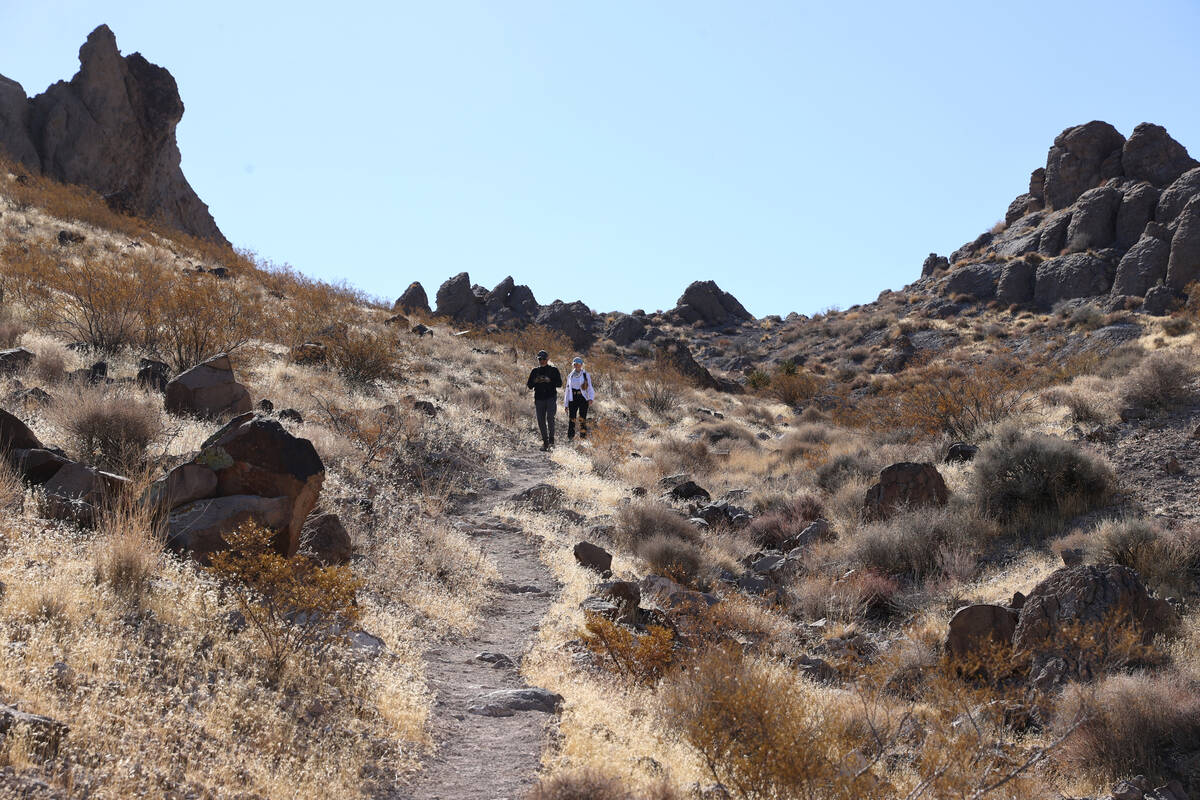$2B water pipeline could disrupt Henderson or Sloan Canyon
A Southern Nevada Water Authority pipeline that could cost the agency up to $2 billion is on the way, ensuring that growing parts of Henderson and western Las Vegas don’t experience water service disruptions.
Known as the Horizon Lateral pipeline, it’s an enormous piece of water infrastructure that’s wide enough to drive a Ford F-150 truck through. The costly project is a response to the possibility for repairs on the existing South Valley Lateral pipeline, which was constructed in 1996 and supplies about 40 percent of the valley’s water.
It’s the only Las Vegas area water infrastructure left without “redundancy,” or the ability to keep water flowing via other avenues if the pipeline is taken out of service for repairs, said Doa Ross, the water authority’s deputy general manager of engineering.
“Unfortunately, we have no crystal ball to see what might happen emergency-wise,” Ross said. “But essentially, if we have to take any section of that main down, there are going to be large portions of the valley that are going to be without water after a period of time.”
Potential disruptions to Henderson roads
The exact location of the valley’s future Horizon Lateral project, a part of the water authority’s major construction and capital improvement plan from 2020, isn’t decided.
Engineers have identified two potential routes, but they have a strong preference for one of them.
The northern route would cause disruptions to urban areas of Henderson for up to seven years while the pipeline is constructed, including one of the city’s main roads, St. Rose Parkway, Ross said. That’s because the agency would need access to the ground from areas like community parks.
“We heard very strongly — and so did our electeds — from the community residents, parks, the businesses. All of these people in the northern alignment, they would really rather not see it happen,” Ross said.
Alternatively, engineers will drill under the Sloan Canyon National Conservation Area — a route that would require not only an act of Congress but a federal environmental review that is standard for projects being constructed on public land.
Rep. Dina Titus, D-Nev., reintroduced the Sloan Canyon Conservation and Lateral Pipeline Act this month. The bill would grant the right-of-way permits needed for the Horizon Lateral project while increasing the size of the protected area by 9,290 acres.
The bill — the passage of which was unsuccessful in the previous Congress — was referred to the House Committee on Natural Resources, but no further action had been taken as of Friday.
“This legislation increases water service reliability for more than one million residents and hundreds of businesses in Southern Nevada, helping ensure the long-term viability of our regional water system while also expanding and protecting environmental resources for our community,” water authority general manager John Entsminger said in a statement at the time.
Concerns about Sloan Canyon route
While the water authority has said the Sloan Canyon route would be the least disruptive, not everyone is on board with drilling in a national conservation area — even if it’s 100 feet underground.
Ron Safran, president of the Friends of Sloan Canyon group, said he was uneasy when water authority staff first came to the board of his organization to present the idea.
One of the access points to the ground would be near the Petroglyph Canyon Trailhead, close to where a permanent visitors center is being constructed. Safran said he considers this area to be among the most visited and “the most sacred” because of the petroglyphs — ancient rock carvings.
However, with a promise that the national conservation area would expand and that measures would be taken to shield wildlife and minimize the disturbance of the surface, Safran and his board agreed.
“The organization tacitly said: ‘OK, we’re basically fine with this, if you follow through with your promises,’” Safran said.
Still, Safran remains concerned that the pipeline wouldn’t be underground forever, potentially disrupting the surface again if repairs are needed down the line, he said.
“There’s all these potential catastrophes that can happen,” Safran said. “However unlikely it is, I think that that’s one thing that should be taken into consideration when you’re dealing with protected lands: What are all of those potential future issues?”
Contact Alan Halaly at ahalaly@reviewjournal.com. Follow @AlanHalaly on X.




















